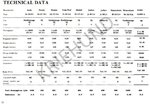Edgar Brooks
Senior Airman
Well, strangely enough, it's very difficult to understand, when your friends and relatives are being blasted to bits, "Oh, that's alright, they're not really Nazis, so they don't really want to kill us." Stop playing semantics; if you fight for an ideology, you support that ideology.

